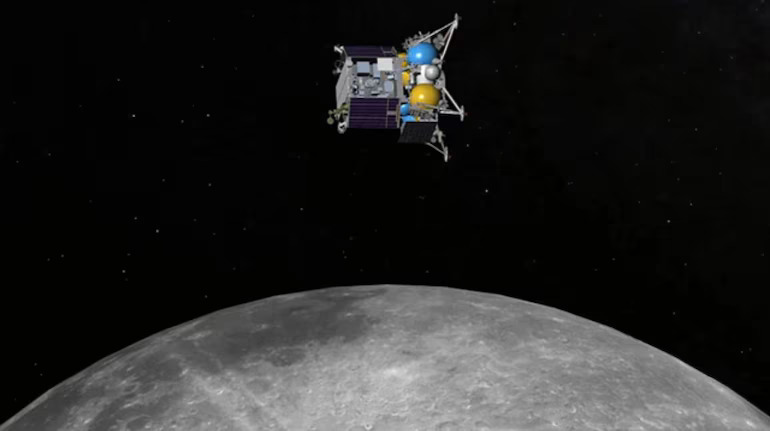Russia’s Luna-25 mission was in a tight race with India’s Chandrayaan-3 to make a landing on the moon, more so since it is the first moon mission by Russia in nearly half a century. However, it seems that Chandrayaan-3 is now ahead of its Russian counterpart, as Russia’s Luna-25 lunar mission, designed to mark the country’s resurgence in lunar exploration, has now ended in disappointment. In a significant setback for Russia’s lunar exploration ambitions, the eagerly awaited Luna-25 spacecraft met an untimely end on Sunday, crashing into the lunar surface.
The spacecraft, which aimed to achieve the historic feat of landing on the Moon’s south pole, suffered an unexpected malfunction that led to its uncontrolled trajectory and eventual collision. The last moon mission by Russia was in 1976, when it was still the Union of Soviet Socialist Republics (USSR).
Roscosmos, the country’s state space corporation, announced the same on Sunday, revealing that it spun out of control in an uncontrolled orbit before it crashed into the surface of the moon. The Luna-25 mission was, understandably, a significant endeavour for Russia, representing its return to lunar exploration since the days of the Soviet Union. The spacecraft was designed to land on the Moon’s south pole, an area believed to contain frozen water and precious elements – a goldmine for study and research.
The mission’s primary goal was to study the lunar surface and exosphere, potentially unlocking valuable insights about the Moon’s composition and history. Despite high hopes, however, the Luna-25 mission faced a critical setback as the spacecraft encountered difficulties during a crucial manoeuvre a day after Roscosmos lost contact with the Luna-25 – the agency said that the spacecraft ran into difficulties and reported an “abnormal situation”.
“The apparatus moved into an unpredictable orbit and ceased to exist as a result of a collision with the surface of the moon,” a statement from the agency revealed. For those who need a reminder, it was launched from the Vostochny Cosmodrome in Russia’s Far East on August 10. “On August 19, in accordance with the flight program of the Luna-25 spacecraft, it was planned to issue an impulse to form its pre-landing elliptical orbit. At about 14:57 Moscow time, communication with the Luna-25 spacecraft was interrupted. The measures taken on August 19 and 20 to search for the device and get in contact with it did not produce any results,” Roscosmos added.
So far, three governments have managed successful moon landings – the Soviet Union, the US and China. Russia and India were looking to change that with their lunar missions and add their names to the list.
Russia’s Luna-25 was in a race against India’s Chandrayaan-3, which was launched on July 14, to become the first to reach the Moon’s south pole. Both missions were expected to land around the same time, between August 21 and 23. However, with Luna-25’s crash, Chandrayaan-3 is poised to potentially achieve this milestone, making it the first spacecraft to successfully land on the lunar surface and propel India’s position in the global space mission landscape.
Chandrayaan-3 has already moved into its pre-landing orbit of 25 km x 134 km from the lunar surface, and is set to commence its descent at around 5.45 PM IST on Wednesday. The touchdown is expected to happen after 15 minutes.
The Tech Portal is published by Blue Box Media Private Limited. Our investors have no influence over our reporting. Read our full Ownership and Funding Disclosure →






